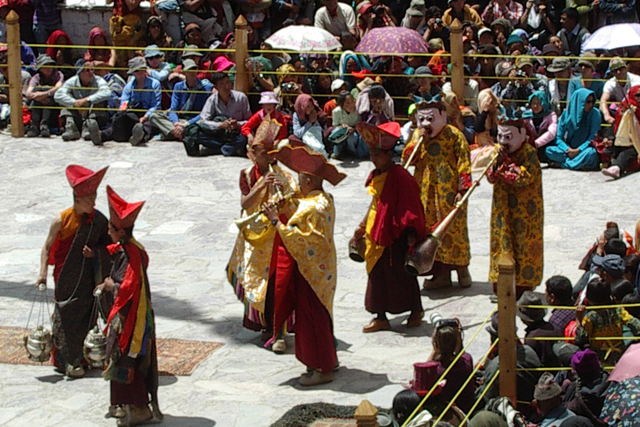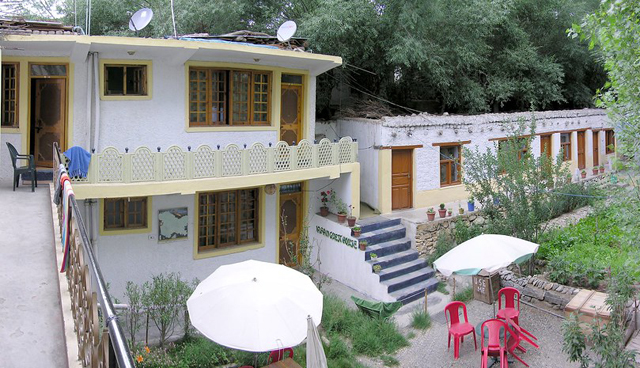Many peaceful societies have learned how to contend with tourists. People welcome them into their communities, build businesses and festivals to attract their money, and try to figure out how to preserve their own ways in the face of visitors and their need to be entertained.

Ladakh is a good example of a society that has been transformed by tourism, but as an article in 2012 pointed out, the Ladakhi themselves are striving to preserve elements of their traditional ways and to restore an appreciation for their folk songs and dances. Their young people are becoming captivated by foreign cultural ways but they are also attracted by the performances that are shown by their elders to the tourists.
An article last week threatens to upend this happy scene with the news that the number of tourists in Ladakh so far this year has declined significantly from recent years. According to people in the tourist industry in the Leh District of Ladakh, the number of tourists has dropped by over 50 percent in 2019. Reasons given for the decline include the late opening of one of the major highways into Ladakh, the cancellation of some flights into the district, and the national elections this spring.

Amrit Badam, who has run liquor and hotel businesses in Leh for 30 years, said that his hotels in May of 2018 were at 80 to 95 percent occupancy. This May only 40 percent of the rooms in his establishments were occupied. As with others, he blames the reduced number of flights, the late opening of the main road into Ladakh, and the security issues surrounding the parliamentary elections for the serious decline. Security concerns due to tensions between India and Pakistan have also contributed to a drop in tourism.
The number of tourists visiting Ladakh in 2018 was the highest on record. According to an official with the state department of tourism, 327,366 tourists visited the Leh District last year, of whom 49,477 were international visitors. In comparison, five years earlier only 137,000 tourists visited Ladakh, according to another article.
With some exceptions, that article observed, the tourists had only a minimal impact on the Ladakhi people. After dressing in their colorful traditional clothing, the Ladakhis often appear to enjoy being the objects of tourists’ cameras. Besides, the visitors bring in needed revenue. But conservative Buddhist leaders in Leh decry the visitors’ morals relating to drugs, alcohol, and sex, values that they feel the tourists introduce to the Ladakhi people. The conservatives argue that tourism poses a danger to traditional Ladakhi culture.
Other articles over the years about the tourist industry in Ladakh have made it sound as if the Ladakhi people in general have grown used to the tourists. The question is, how will they adjust to an economic downturn if the tourism decline continues?